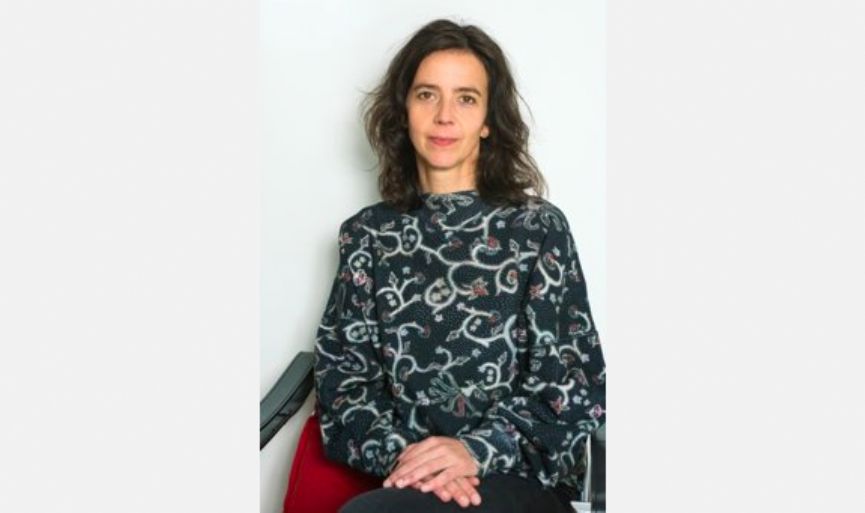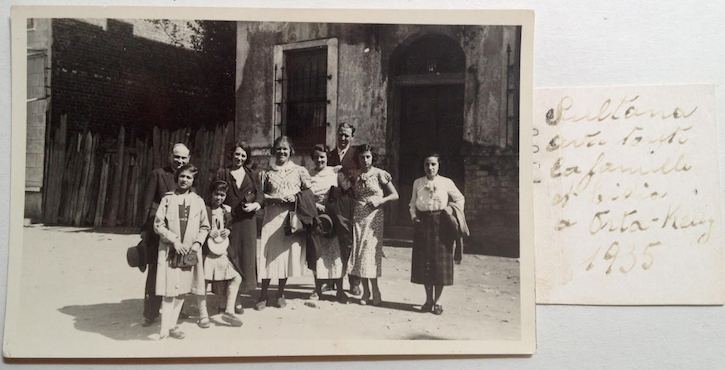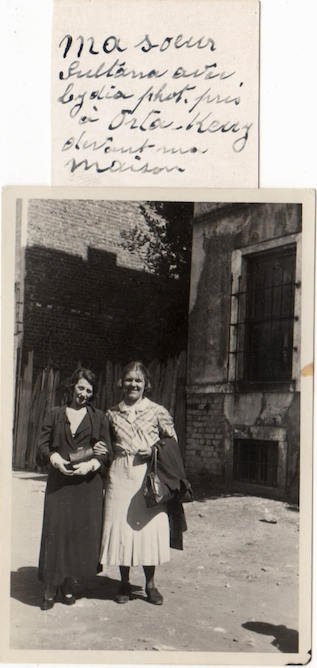
Following My Great-grandfather´s Footsteps
With Françoise Caraco, who begins her story saying I found some old photos at my fathers house,, we talked about her project Hidden Istanbul based on her family history dating back to the end of 19th century. I met Caraco, who has been coming back and forth to Istanbul since 2012, via an e-mail. I wanted to share this interesting story, which in fact could happen to any one of us.
Translation by Janet MITRANI
Would you introduce yourself? Why did you come to Istanbul?
I am a Swiss artist, living in Zurich. I studied my undergraduate and graduate degrees in Fine Arts in Zurich. I also studied photography, after which for ten years I worked as a photographer. The reason I came to Istanbul is that my surname is Caraco. My great-grandfather used to live in Istanbul and he immigrated to Switzerland in 19th century. I have been conducting family researches for a long time.
Are all your projects about family histories? Does this have a special reason?
Not all of them, but I’ve always done things and researched archives about memories, history and personal stories of people. And yes, this has a reason... Because there might be gaps and the past can be told in a different way, like a story. For example, when I started family researches, I didn’t know much about my father’s family. I worked with covert elements and I filled the gaps with fiction.
What was the beginning point, motivation of your current art project based on Ortaköy, Istanbul?
I found some old photos at my father’s house. These were the photos of my great-great aunt, who lived in Ortaköy. My great-grandfather had immigrated to Switzerland in 19th century and couldn’t come back. Maybe he was afraid, we don’t know that. He had a lace shop in Switzerland. One day someone who worked there said she would go to Odessa. He then told her “If you’re going to Odessa, first go to Istanbul and take my greetings to my sister. I will let you go only if you do this.”

How do you know all these? How did you learn this story?
I don’t remember how I know it, and it makes me sad not to know where the story comes from. This is a story always told in the family. This person was named Lydia. She went to Ortaköy, found my great-grandfather's sister, took the family’s photo and brought it back with her when she came back to Switzerland. My great-grandfather wrote “This is my sister” on the photo. When I found the photo, it was impossible for my great-grand father to go to Istanbul. So I told myself, I would do this, I would try and find where the photos were taken. My first motivation was that, or rather the beginning of all the journey...
Besides, when you ask for the surname Caraco in Switzerland, they say it is a Spanish name. When people ask me where I come from, I tell them as much as I know, but that’s not much to say. I came here to learn some details. For example, I wasn’t even sure my great-grandfather spoke Ladino but I found such a letter. Anyway, I have a weird surname for Switzerland.
You have an art-book project called ‘Hidden Istanbul’. Could you tell our readers about this project?
I have to say this about ‘Hidden Istanbul’: In fact, the city is hidden for me, because this is not my country, my community. I may have opened a door with this project, but I am still not inside. I am still outside.
First, I wanted to meet Jews between the ages 20 and 90, living in Istanbul, for my art project. This way I could ask them questions about their lives and memories of Istanbul. The idea behind this is: If my great-grandfather hadn’t immigrated to Switzerland, this could have been my life.
Another important aspect of this is that, when I ask people questions about their lives, I don’t learn just their personal stories, but things about Turkish Jewish Community’s history and Turkish history.
‘Hidden Istanbul’ project is full of memories of the city and life...
How many interviews have you conducted in total?
About 25-30... When I started the project, I wrote to Karen Gerşon, Coordinator of Sephardic Culture Center, and she told me “Please come to our offices and talk about your project.” I visited them, and told them what I wanted, and that I was looking for people to interview. She gave me e-mail addresses of 5 people. I e-mailed them, 2 of them replied. When I was interviewing them, I asked “Do you know other people as well?”; they helped me. It’s hard to reach people but if someone asks for you it’s easy. When I wrote them directly, sometimes they didn’t reply, but when I told them “I got your e-mail from such and such person”, I received replies.
How long have you stayed in Ortaköy except for the interviews?
Not too long... I first came to Ortaköy in 2012. I also went to the cemetery. First off, with the photos in my hand, I was going around Ortaköy, looking for the house. When I came back in 2016, I met someone from the family who told me that there now was a hotel, where my great-grandfather used to live. That was the end of the search for me.
 However, during our conversation, I realized that it is indeed important for me what the house looked like, where my great-grandfather grew up. There is a photo, where you can see my great-grandfather's sister, but there is nothing recognizable about the house, the picture could be taken anywhere. Only the sentence my great-grandfather added to the photo: “Sultana ma sœur avec Lydia a Ortaköy, devant ma maison (Sultana my sister with Lydia in Ortaköy, in front of my house)” refers to the place. My great-grandfather obviously had a clear memory of the house, when he saw this photo, he could combine the black-and-white photo with his image of the house. It is an important point in my work that today I can't do that when I see the photo, the house remains fictitious.
However, during our conversation, I realized that it is indeed important for me what the house looked like, where my great-grandfather grew up. There is a photo, where you can see my great-grandfather's sister, but there is nothing recognizable about the house, the picture could be taken anywhere. Only the sentence my great-grandfather added to the photo: “Sultana ma sœur avec Lydia a Ortaköy, devant ma maison (Sultana my sister with Lydia in Ortaköy, in front of my house)” refers to the place. My great-grandfather obviously had a clear memory of the house, when he saw this photo, he could combine the black-and-white photo with his image of the house. It is an important point in my work that today I can't do that when I see the photo, the house remains fictitious.
As part of my research I am now looking for contemporary witnesses who could remember what this house looked like. If someone from Istanbul can remember this house and describe it to me, I would be very happy to receive an e-mail to my address: francoise@caraco.ch. It is by these collected memories of contemporary witnesses I shall be able to reconstruct a memory of this house, to locate it fictitiously and connect it with the black-and-white photo.
Therefore, I want to express this; To the esteemed reader: At the place in Ortaköy where the Hotel Princess is located today, there used to be my great-grandfather's house. If you remember what this old building looked like, please let me know by e-mail: francoise@caraco.ch.
You had stated that if your great-grandfather hadn’t left, you would have a very different life. Do you have any idea now how that life would be?
No, people I had interviewed are very different from eachother and there are many possibilities. There’s only one life to live but many possibilities. I am planning to finish the art-book in fall or winter of 2020. After that maybe at the beginning of 2021, there will be an exhibition.
Related Newsss ss









